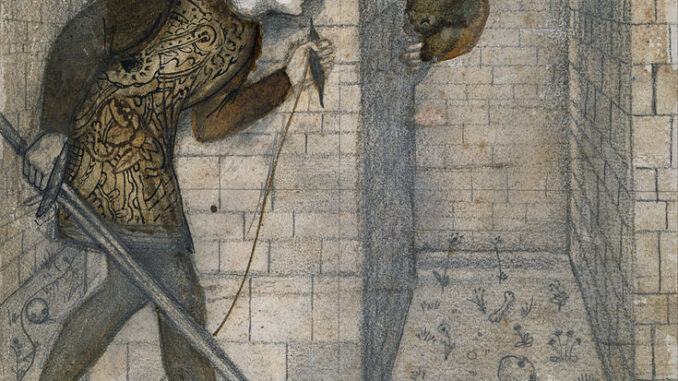
Hello again everyone,
And welcome to Part 2 of the Dungeon Creation series. 🙂
So last time we decided on a prison that was holding a Minotaur warlord captive. A prison built specifically for that creature, by a peace-loving society. So today it’s time to look some more at it.
Construction:
We already know that the hallways have to be big enough to accommodate the Minotaur (which is a Large creature), so the hallways should be 10 feet wide, due to their spacing. We also know that it’s not exactly a creature that’s known for its manual dexterity, but for its strength. So this takes us to this first part:
Doors:
Doors in this place are reinforced and strengthened to keep in the captive. Instead of being locked, they’ll be barred at least internally (any external doors could be conventionally locked). Lifting the bar from the outside is easily accomplished, but breaking down the door is far more difficult. (We’ll leave the details up to the GMs of the various systems, as the mechanics for these are a bit different. If this was an actual adventure or campaign feature in your home-campaign, you can of course take this into account. Do note that these are the STANDARD doors for the place – any individual door might be different).
Walls:
Looking back, it seems like this is a civilized society, but they’ll likely have had limited resources (due to the size of the town) or been in a hurry. As such, the walls will be of rough-hewn stone. The archetypical stone is granite, but granite is quite hard to work with. So we’re going to go with something a little easier. My original thought had been sandstone, as it’s a lot easier to work with, and softer. But seeing as it’s a civilized society, we’re going to go with bricks. Red clay bricks, to give it a bit of a cool look. These will have been baked in an oven to make them strong. (Since it’s been around for thousands of years, and is remarkably strong, it makes for excellent building material. And it can be mass-produced relatively quickly).
Lighting:
Minotaurs have darkvision, so it would make sense for there to be no light. However, darkvision only has a range of 60 feet for most creatures, so in an open (large) space, it would be a good idea with lighting to prevent it from being claustrophobic. In the smaller rooms that are more common in a dungeon, it’d make sense to not use lights. However, this dungeon seems to be built by surface-dwellers (at least in my head), so there has to be some sort of lighting.
Torches and lanterns would be the standard, but these require replacement when used, so it’ll depend on whether guards are intended for the dungeon. Magical lighting (in most cases) does not require replacement so that’s a possibility too, but for the society that built this place, I imagine that magic was a bit less common, so we’re going to go with torches. So there will be torch-scones on the walls all around.
But, and this is important, there might not necessarily be torches IN them. They will only be there if they were replaced as they burned down. So it’s worth taking the history of the place into account. And that is where we will pick up next week. 🙂
Kim Frandsen
Latest posts by Kim Frandsen (see all)
- Finder’s Archive – Crypt of the Eternals - June 2, 2023
